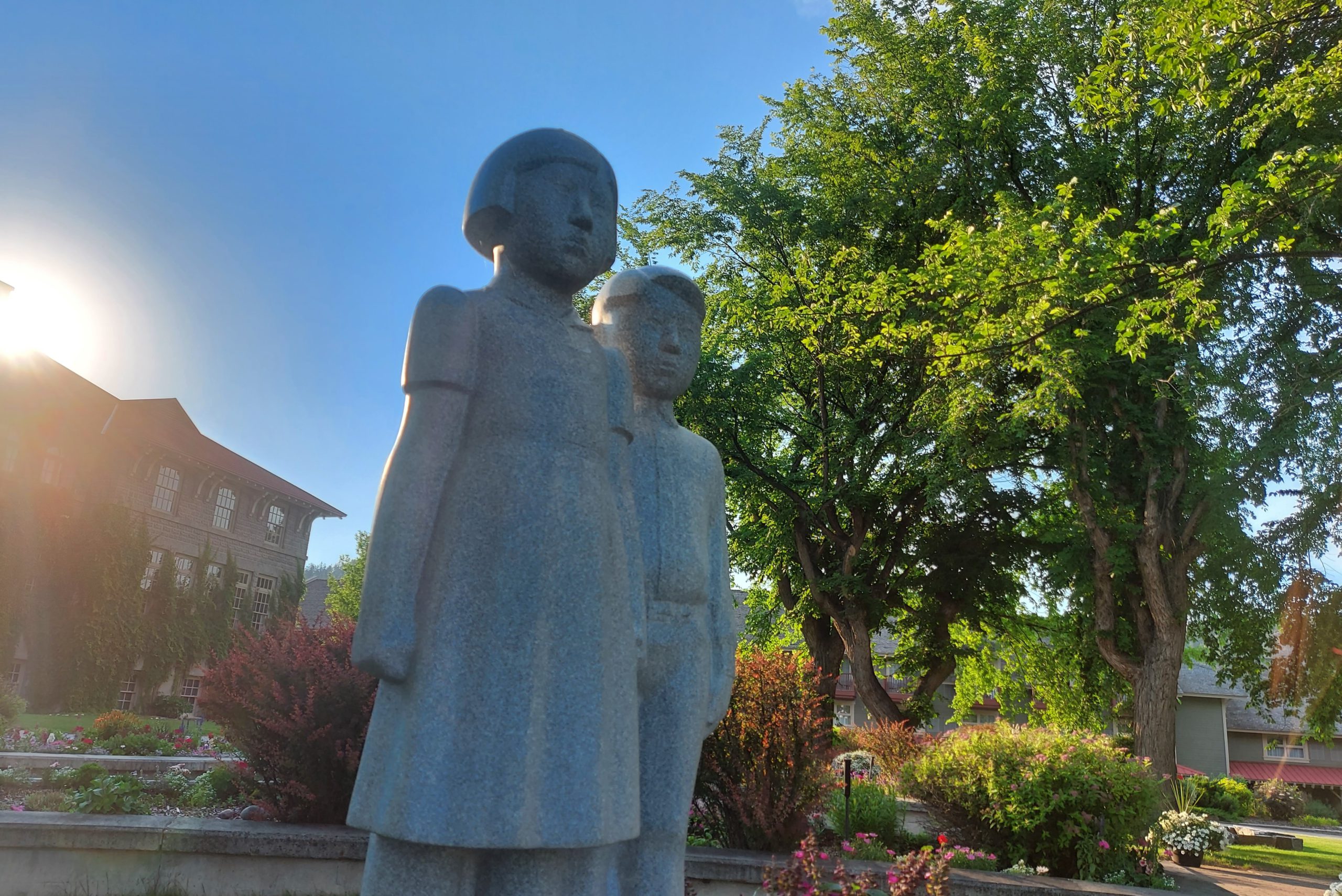In honour of Indigenous History Month, MyNelsonNow.com spoke with a Ktunaxa Elder about the Indigenous community’s past.
According to Elder Alfred Joseph, the Ktunaxa people first made contact with European settlers in the late 1700s
“In 1792, Peter Fidler wrote in his notes that he met a group of Ktunaxa, or Kootenay people, on the east side of the Rocky Mountains, and they wanted to trade horses,” said Joseph.
About 60 years later in 1855, the Hellgate Treaty was signed in the U.S. which caused a number of Indigenous People to move north.
“Some of the Ktunaxa people that were there disagreed with the Treaty, so they came up and joined our people up here,” said Joseph.
When Indigenous reservations were created around 1888, the Canadian government engaged in a negotiation with the Ktunaxa to decide how much land would be given to settlers, and how much was allocated for Indigenous People.
“The chief at that time, his name translated to English was Big Horn. So, Big Horn rode his horse to a place that, I believe, was just south of Fairmont. If I understand the language, a rock was in the river and he pointed to it and said ‘all the land that you see, from this point, from the mountain top, across the valley, to the other mountain top, that is my land.’ Then he rode his horse to Windermere Lake and said the same thing,” explained Joseph.
However, those responsible for drawing boundaries for reserve lands felt this area was too large, and renegotiated it to a smaller parcel of territory.
“They had agreed, eventually, to the area between Windermere Creek and Fairmont Creek,” said Joseph. “At that time, the Chief was asked why he’s so interested in the other side of the river, he said it was because we had horses and cattle, and they needed a place to graze.”
Joseph added that the supposed agreement for the ʔakisq̓nuk Indigenous Reserve was for a piece of land that was between the two creeks and stretched from the mountain top to the east, over to Columbia Lake to the west. The reality, however, differed from this agreement.
“The surveyor went to a certain location and drew lines, let’s say to the east and north. So our reserve ended up in three connecting triangles of all different sizes,” explained Joseph. “What wasn’t considered was that, in our way of looking at things, we looked at natural boundaries and barriers. We never looked at east or west or however many degrees, that was a concept we never had.”
Even though the Ktunaxa people were unhappy with the arrangement, the McKenna-McBride Royal Commission running from 1913 to 1916 did not change much for the ʔakisq̓nuk Ktunaxa people.
The Europeans were looking for ways to exploit the local Ktunaxa population by recruiting them into the fur trade.
“David Thompson was trying to get the Ktunaxa to trap. In his recordings, he talks about how the Ktunaxa would not go trapping in the winter because they were in a time of resting their bodies through ceremonies and whatnot,” said Joseph.
Early colonists, looking for ways to exploit the local Ktunaxa population, resorted to twisting the Indigenous population’s cultural practices to their benefit.
“They had to defeat our spiritual system that we had in place, which was a daily routine. They had to break that somehow,” said Joseph.
Joseph then explained a hand-written account from a Ktunaxa elder regarding efforts made by the Europeans to win over the minds of Indigenous people through manipulation.
“He writes that some of the missionaries would mimic what our medicine people did in ceremonies to heal people. They would mimic what they saw, and they would tell the person they were doing this fake healing ceremony with, that they took the person’s soul. That has a very strong negative impact on people,” explained Joseph. “The missionaries came through and they gave us the idea of Heaven and the idea of the devil. We did not have a devil before they came.”
The arrival of European settlers drastically changed life for the Ktunaxa and every other Indigenous Nation across North America.
In Canada, Indigenous People were not included in much of the government’s decisions before and after the country was officially founded.
The rules imposed on Indigenous People effectively excluded them from citizenship and meaningful participation in society. The limitations even extended to cultural practices.
“For 87 years, between 1866 to 1953, Indigenous People weren’t allowed to preempt, or take up, any land in B.C.,” said Joseph. “Between 1927 and 1951, Indigenous People were not allowed to hire lawyers or pursue land claims. For the 66 years between 1885 and 1951, we were prohibited from and imprisoned for practicing spiritual ceremonies.”
Joseph added that Indigenous People were not allowed to vote in B.C. until 1949 and were barred from participating in federal elections until 1960.
The St. Eugene Residential School was opened in 1908 near Cranbrook. Joseph was born in 1952 and later attended the school for 12 years.
Joseph recalled a time early in his attendance at the school, where two of his older cousins warned him not to speak their language.
“I remember playing with them, and I can pretty well remember the spot where one of them told me ‘if you’re going to talk like that, get away from us.’ What was probably happening is that I was talking in Ktunaxa like we normally did at home. When I was told that, it really scared me because there were over 100 boys there at the time, and these two were the only ones I knew,” explained Joseph. “I guess they knew if anybody heard our language in there, we would get in trouble.”
Joseph described over the years that he was exposed to ways the residential school tried to strip the students of their culture and language.
“All of our decisions were based on fear. If I do this, what are the ramifications of it,” said Joseph. “There were a lot of mind games where, as a teenager, we would have to get the proper perspective in the play.”
After the school closed in 1970, work could begin in restoring Ktunaxa culture. Since the school closed, the building has been converted to a high-end resort that keeps reminders of what used to happen in the halls of the old school.
Joseph said the first post-residential school governing body for the Ktunaxa started between 1970 and 1980.
At the time, it was known at the Kootenay Indian District Council, the organization was meant to promote Ktunaxa independence. The organization renamed itself in 1990 to the Ktunaxa Kinbasket Tribal Council, and eventually to the Ktunaxa Nation Council, as it is known today.
“From those political groups, we started to get more say and a little bit more control of what was happening with our education system and with a lot of the other things the government was pushing on us,” said Joseph. “Right to this day, we still have our political body, which is quite influential. A lot of the things we discuss are things that are going to affect us and things we try to change for either a more positive result or to something with a lesser impact.”
Efforts to revive and preserve the Ktunaxa language started in 1981. In 2020, Joseph started getting involved in online language lessons
“I worked on the language on my own without any funding for about seven or eight years,” said Joseph. “Over the 40 years of language lessons, I’ve learned that there’s a big interest in learning the language.”
Efforts to build a curriculum around the classes, and revive and preserve other aspects of Ktunaxa culture are ongoing.





